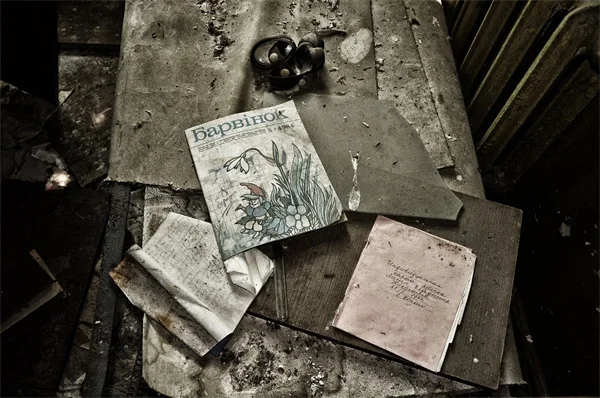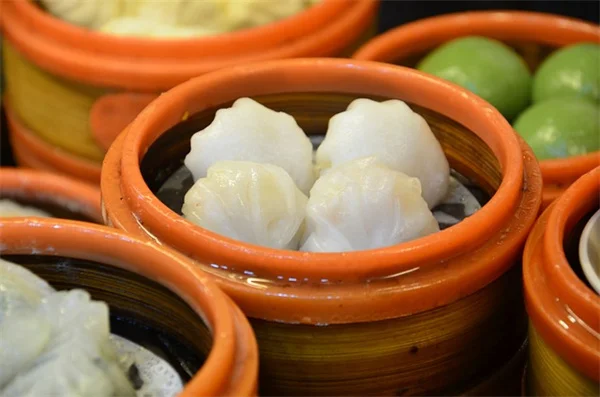5 Shocking Reasons to Never Use Tap Water in Your CPAP Machine
Advertisement
Should you use tap water in your CPAP machine? The answer is absolutely not! Here's why: tap water contains dangerous pathogens like Pseudomonas aeruginosa and Legionella that can cause serious lung infections when inhaled through medical devices. The CDC's recent findings show that 1 in 4 Americans are making this risky mistake without realizing the potential consequences.I've been researching this issue extensively, and let me tell you - what you don't know about your tap water could hurt you. While it's perfectly safe to drink (thanks to our gut's defenses), aerosolized water in devices like CPAP machines and humidifiers bypasses those protections, delivering germs straight to your vulnerable lungs. The scary part? Many healthcare providers aren't warning patients about this hidden danger.But don't panic! In this article, I'll walk you through exactly why this matters, who's most at risk, and most importantly - how to protect yourself with simple, practical solutions. Your health is too important to leave to chance, so let's dive in!
E.g. :Pediatrician-Approved New Year's Resolutions for Kids of All Ages
- 1、Wake Up Call: Why Your CPAP Machine Deserves Better Than Tap Water
- 2、Why Your Lungs Deserve VIP Treatment
- 3、Smart Solutions for Safe Breathing
- 4、The Bigger Picture: Why This Matters to Everyone
- 5、The Hidden Dangers Lurking in Your Water Pipes
- 6、The Distilled Water Advantage You Never Considered
- 7、Beyond CPAP: Other Medical Uses for Proper Water
- 8、Making the Switch: Practical Tips for Busy People
- 9、FAQs
Wake Up Call: Why Your CPAP Machine Deserves Better Than Tap Water
The Shocking Truth About What's in Your Tap Water
Let me tell you something that'll make you think twice before filling your CPAP machine with tap water. The CDC calls it "unsterile water" for a reason - it's basically a swimming pool for nasty germs! We're talking about troublemakers like Pseudomonas aeruginosa and Legionella that can throw a party in your lungs if you're not careful.
Here's the kicker - nearly half of Americans think tap water is safe for medical devices, according to that eye-opening CDC survey from 2021. That's like believing you can use pond water for your contact lenses! The scary part? About 25% of people actually use tap water in their CPAP machines and humidifiers. Yikes!
Who's Most at Risk?
Now, you might be wondering - "Is everyone equally vulnerable to these waterborne bugs?" Great question! The truth is, while these pathogens don't discriminate, some folks have a harder time fighting them off:
| High-Risk Group | Why They're Vulnerable |
|---|---|
| Older adults | Weaker immune systems |
| Young children | Still developing immunity |
| People with chronic conditions | Existing health challenges |
| Immunocompromised individuals | Reduced ability to fight infections |
Why Your Lungs Deserve VIP Treatment
 Photos provided by pixabay
Photos provided by pixabay
The Nasty Science Behind Waterborne Infections
Picture this: every time you use tap water in your CPAP machine, you're potentially sending an army of microscopic invaders straight to your lungs. Unlike your gut (which is basically a biological bouncer), your respiratory system rolls out the red carpet for these uninvited guests.
Dr. Chatterjee from UC Irvine puts it perfectly: "The intestinal tract has very strong immune defenses but that cannot be said for our lungs." That's why water that's perfectly safe to drink can become dangerous when aerosolized in medical devices.
What Could Go Wrong?
Ever had pneumonia? That's basically what you're risking when you use unsterile water. We're talking about coughing fits that won't quit, chest pain that feels like an elephant sitting on you, and shortness of breath that makes climbing stairs feel like Mount Everest.
The real scary part? Some of these pathogens can set up camp in your lungs and wait for the perfect moment to strike. It's like having a sleeper cell in your respiratory system - they might not cause trouble immediately, but when they do, it's bad news.
Smart Solutions for Safe Breathing
Your Action Plan for Cleaner CPAP Use
Now that I've scared you straight (sorry about that!), let's talk solutions. The golden rule? Distilled water is your CPAP machine's best friend. But if you're in a pinch, here's a pro tip from the CDC: boil that tap water for five minutes and let it cool. It's like giving those germs an eviction notice!
Here's something most people don't think about - your device needs regular cleaning too. Those plastic tubes and humidifier tanks? They're prime real estate for bacterial growth. A quick wipe-down isn't enough - you need proper disinfection to keep things safe.
 Photos provided by pixabay
Photos provided by pixabay
The Nasty Science Behind Waterborne Infections
"But what if I can't get distilled water?" I hear you asking. Fair point! In emergencies, tap water is better than no treatment for life-support devices. But for CPAP users? You might be better off skipping a night or two if sterile water isn't available. Talk to your doctor about your specific situation.
Remember, your breathing deserves the best. Those extra minutes spent boiling water or running to the store for distilled water? They're an investment in your health that pays off every time you take a clean, easy breath through your CPAP machine.
The Bigger Picture: Why This Matters to Everyone
Knowledge is Power (And Prevention)
Here's the wild thing - this isn't just about CPAP users. Anyone using medical devices with water needs this info. From sinus rinses to contact lens cleaning, water quality matters more than most people realize.
The CDC survey showed some troubling gaps in knowledge. Urban dwellers, men, and Black Americans were particularly likely to be unaware of tap water risks. That's why sharing this information matters - it could literally save someone's life.
A Simple Change With Big Benefits
Switching to sterile water is one of those rare health fixes that's both easy and impactful. We're talking about potentially avoiding:
- 120,000 hospitalizations annually from waterborne diseases
- 7,000 deaths each year linked to these infections
- Countless sick days and medical bills
So next time you reach for that tap to fill your CPAP, remember - your lungs will thank you for taking the extra step to keep them safe. After all, breathing easy shouldn't come with hidden risks!
The Hidden Dangers Lurking in Your Water Pipes
 Photos provided by pixabay
Photos provided by pixabay
The Nasty Science Behind Waterborne Infections
You'd think municipal water treatment would catch all the bad stuff, right? Think again! While cities do a decent job killing most bacteria, they can't guarantee what happens in those last few feet of pipe before the water reaches your home. Old lead pipes, biofilm buildup, and even temporary contamination events mean your tap water might not be as clean as you assume.
Here's something wild - did you know water treatment plants actually add small amounts of chlorine to keep water safe during distribution? That's like putting a band-aid on a leaky pipe! While it helps prevent major outbreaks, it's no match for medical device sterilization needs.
The Sneaky Way Minerals Become Problems
Ever notice white crusty buildup in your humidifier? That's mineral deposits from hard water, and they're more than just a cleaning nuisance. These deposits create microscopic hiding spots where bacteria can thrive, protected from cleaning solutions. It's like building a bacteria fortress in your CPAP machine!
| Mineral | Effect on Equipment | Health Risk |
|---|---|---|
| Calcium | Creates scaling deposits | Harbors bacteria |
| Magnesium | Forms white residue | Irritates airways |
| Iron | Stains components | Promotes bacterial growth |
The Distilled Water Advantage You Never Considered
More Than Just Germ-Free
Sure, we all know distilled water lacks bacteria, but did you realize it actually helps your equipment last longer? Without minerals to gunk up the works, your CPAP machine runs smoother and needs fewer repairs. That's money back in your pocket over time!
Here's a fun fact - most sleep clinics actually require distilled water use during CPAP titration studies. Why? Because they've seen firsthand how tap water can distort pressure readings and affect therapy accuracy. Your at-home treatment deserves the same professional standards!
Where to Find the Good Stuff
Now you're probably wondering - "Where does one even get distilled water these days?" Great question! Most grocery stores stock gallon jugs near the bottled water section, typically for under $1. Some pharmacies even carry sterile water specifically labeled for medical use. Pro tip: buy several gallons at once so you're never caught empty-handed!
For the tech-savvy among us, home distillers are becoming surprisingly affordable. While the upfront cost might seem steep (around $100-$200), it pays for itself within months if you're a heavy CPAP user. Plus, you'll never have to lug heavy jugs from the store again!
Beyond CPAP: Other Medical Uses for Proper Water
Your Neti Pot Deserves Better Too
If you think CPAP users are the only ones who need to worry about water quality, think again! Nasal irrigation devices like neti pots have caused rare but serious brain infections from contaminated water. The CDC recommends boiling, filtering, or using distilled/bottled water labeled as sterile for sinus rinsing.
Here's a scary thought - the same water that's fine for brushing your teeth could be dangerous when squirted up your nose! That's because our nasal passages provide a direct highway to the brain, bypassing many of the body's natural defenses.
Contact Lens Cases: A Bacteria Playground
Ever top off your contact solution with tap water when you run low? Big mistake! Even tiny amounts of non-sterile water can introduce dangerous microbes like Acanthamoeba that literally eat your corneas. These infections are rare but devastating - some people need corneal transplants after battling them for months.
The solution? Always use fresh sterile solution, never "top off" old solution, and replace your case every 3 months. Your future self will thank you when you're not dealing with a painful eye infection!
Making the Switch: Practical Tips for Busy People
Building New Habits That Stick
Changing any health routine can feel overwhelming at first. Here's my foolproof method: keep a gallon of distilled water right next to your CPAP machine at all times. Out of sight equals out of mind, so make it impossible to ignore! I even put a cute label on mine that says "Lung Protector" to remind myself why it matters.
Another trick? Set a monthly reminder on your phone to stock up. Mark your calendar for the first Sunday of every month to buy 4-6 gallons (depending on your usage). This prevents those last-minute panic runs to the store when you realize you're almost out.
Traveling With Clean Water
Vacations are when good habits often go out the window, but your lungs don't take holidays! Here's what I do: pack an unopened gallon of distilled water in my checked luggage (TSA allows it) or research nearby stores at my destination. Some hotels will even provide distilled water if you call ahead - it never hurts to ask!
For shorter trips, consider portable water distillers or sterile water packets designed for travel. They're lightweight and take up minimal space in your luggage. Remember - skipping proper water for "just a few nights" is how bad habits start!
E.g. :Sleep Apnea: Tap Water Can Be Dangerous to Use in CPAP ...
FAQs
Q: Can boiling tap water make it safe for my CPAP machine?
A: Yes! The CDC specifically recommends boiling tap water for at least 5 minutes to kill harmful pathogens before using it in medical devices. Here's how we do it: First, bring water to a rolling boil (not just bubbles). Set a timer for 5 minutes once it's boiling vigorously. Then let it cool completely before use. While distilled water is ideal, properly boiled tap water is a safe alternative in a pinch. Just remember - this only works if you boil it fresh each time and store it properly!
Q: What are the symptoms of waterborne infections from CPAP machines?
A: The symptoms often mimic pneumonia and can include persistent cough, chest pain, and difficulty breathing - basically feeling like you can't get enough air. Some people develop fever or chills too. What's particularly concerning is that certain pathogens can linger in your lungs for weeks before causing problems. If you've been using tap water in your device and develop these symptoms, tell your doctor immediately about your CPAP use. Early treatment makes a big difference!
Q: How often should I clean my CPAP machine to prevent infections?
A: We recommend cleaning your CPAP equipment daily if possible, but at minimum 2-3 times per week. Here's our proven routine: Every morning, wash the mask, tubing, and water chamber with warm, soapy water (use mild dish soap). Rinse thoroughly and air dry completely before reassembling. Once a week, soak components in a vinegar solution (1 part white vinegar to 3 parts water) for 30 minutes to kill any lingering bacteria. Never use harsh chemicals that could damage the equipment or leave harmful residues you might inhale.
Q: Is bottled water safer than tap water for medical devices?
A: Surprisingly, no - most bottled water isn't sterile unless specifically labeled as distilled or sterile. Many brands simply bottle filtered tap water, which still contains those problematic microorganisms. The only guaranteed safe options are: 1) commercially distilled water, 2) sterile water from pharmacies, or 3) properly boiled tap water. When in doubt, check the label for words like "distilled" or "sterile" - if it doesn't specifically say so, assume it's not safe for medical use.
Q: Who is most at risk from infections caused by tap water in medical devices?
A: While anyone can get sick, certain groups face much higher risks: elderly individuals (65+), young children, people with chronic lung conditions (like COPD or asthma), and anyone with a weakened immune system (from conditions like HIV or cancer treatments). These vulnerable groups can develop severe, even life-threatening infections from waterborne pathogens. If you or a loved one falls into these categories, being extra vigilant about water quality in medical devices could literally be a lifesaver.







